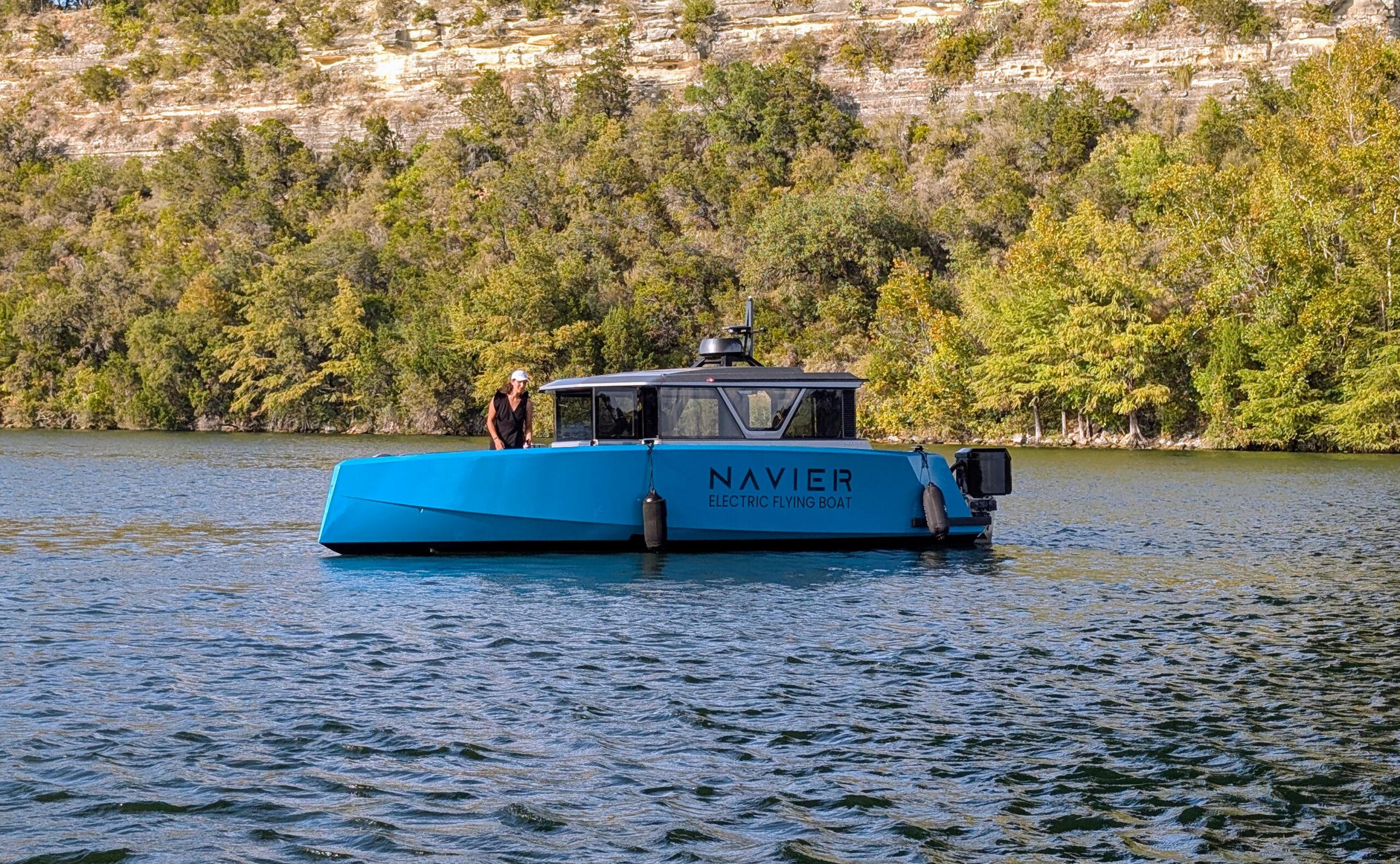
Sign up for daily news updates from CleanTechnica on email. Or follow us on Google News!
Decarbonizing heavy duty trucks has been a long, hard slog. Here in the US, battery-electric trucks have been slow to catch on, and hydrogen fuel cell trucks have been even slower. Hydrogen vehicles can deploy combustion engines that burn 100% hydrogen or a hydrogen-diesel blend, but that pathway is also fraught with challenges. In one sign of progress, new cryo-compression technology is emerging to resolve a key hydrogen energy density issue. The question remains, though: Who wants to buy a hydrogen vehicle?
The US Army Wants Hydrogen Vehicles, That’s Who
The US Army is among the hydrogen-curious fleet owners exploring the idea of of hydrogen fuel cell electric vehicles for heavy-duty use. They have also been exploring battery-powered electric vehicles, including a forthcoming hybrid version of the Bradley. Still, full combat-ready electric mobility represents a next level challenge for the Army, whether batteries or fuel cells are involved.
The Army’s interest in hydrogen vehicles surfaced on the CleanTechnica radar back in 2010, when they were investigating fuel cells to generate auxiliary power for tanks. Around that time the Army also launched a small test fleet of GM fuel cell vehicles in Hawaii.
Signs of a continued interest in fuel cell trucks emerged in 2017, when the Army took note of the stealth advantages of a Chevy Colorado electric vehicle powered by fuel cells. Last year the Army also demonstrated a fuel cell rescue vehicle capable of going 1,500 miles between refills, a key consideration for operation in remote locations.
As for how to deliver hydrogen to vehicles in remote locations, the Army has also been testing a mobile electrolysis unit, which can scavenge local water and renewable energy resources to generate green hydrogen on the spot (see lots more green hydrogen background here).
US Army Eyes Cryo-Compression For Hydrogen Vehicles
In the latest development, the Army has emerged as a funder in support of the California-based hydrogen compression firm Verne. The startup launched in 2020, leveraging decades of research at Lawrence Livermore National Laboratory to increase the energy energy density of stored hydrogen by deploying cryo-compressed hydrogen technology (CcH2 for short).
LLNL mechanical engineer Salvador Aceves is credited with developing thermodynamic modeling to demonstrate the practical use of CcH2 more than 25 years ago, leading to a series of CcH2 tanks fabricated by his team including one deployed on a fuel cell passenger car.
The R&D partnership with Verne has turned attention to decarbonizing Class 8 heavy duty trucks, though not necessarily trucks equipped with fuel cells. Verne has indicated that CcH2 is propulsion-agnostic. The tanks can be integrated with fuel cells, specialized hydrogen combustion engines, or existing diesel engines that can accommodate a hydrogen-diesel blend.
In a recap of the effort posted in 2023, LLNL noted that energy density has been a significant obstacle for hydrogen vehicles. “Powering heavy-duty vehicles, such as Class 8 semi trucks, requires very energy-dense storage systems: even the most advanced batteries do not provide sufficient energy density. Hydrogen is a promising fuel source for these difficult-to-decarbonize sectors,” LLNL explains.
That sounds optimistic enough, but as of 2023 there was still work to be done. “However, existing hydrogen-storage technologies do not provide diesel-parity performance, as these compressed-hydrogen storage systems have limited energy density capacity,” LLNL continued.
In addition to resolving the power issue, the improved energy density of CcH2 also translates into a more compact system that can fit into the space normally occupied by tanks of diesel fuel. According to the LLNL, as of 2023 CcH2 (cryo-compressed hydrogen) beat liquid hydrogen on energy density by 27%. For standard 700-bar compressed hydrogen CcH2 racked up a 77% improvement, and it yielded a 165% improvement over 350-bar compressed hydrogen.
Who’s Gonna Pay For All This?
The Army is not the only one to spot a new opportunity for silent, zero emission mobility in hydrogen vehicles. Verne made the cut for the first Breakthrough Energy cohort of fellows projects in 2021, and Breakthrough funded much of the hydrogen demonstrator project with LLNL. Amazon’s Climate Pledge Fund was also an early funder along with the Energy Department’s ARPA-E office for supporting high risk, high reward energy innovation.
ARPA-E put down a stake of almost $500,000 in funding for Verne’s CcH2 system in August of 2022, describing it as “thermodynamically optimal for high-density, low-cost storage in achieving an economical hydrogen infrastructure.”
If you caught that thing about storage, that is a vital issue for stakeholders in the green hydrogen field, which leverages water and electricity to generate hydrogen instead of extracting it the old fashioned way, from natural gas.
Water electrolysis is a new industry, and the hydrogen it produces is more expensive than the conventional steam reformation process used in the natural gas supply chain. Electrolysis costs are coming down as the industry scales up, but then the cost of storage and distribution also have to be factored in. According to some analysts, the cost of storage and distribution is a deal-breaker unless something changes, and ARPA-E anticipates that change is coming.
“CcH2 is thermodynamically optimal for high-density, low-cost storage in achieving an economical hydrogen infrastructure,” ARPA-E explains. “If successful, this work will validate cryocompressors as a way to decentralize high-density hydrogen and accelerate deployment and utilization of electrolysis and the broader hydrogen infrastructure of the U.S. and globally.”
Verne has not let the grass grow under its feet. As of May last year, the company reported energy density at 73 g/L which it describes as a 33% improvement over liquid hydrogen and an 87% improvement over 700-bar compressed gas hydrogen.
From Hydrogen Vehicles To Diesel-Killing Hydrogen Generators
ARPA-E’s reference to electrolysis as a hydrogen distribution/storage cost-saver is of a piece with the Army’s interest in green hydrogen. Producing hydrogen on site from local resources will reduce if not eliminate distribution-related costs. The missing link is storage, which explains the Verne connection.
In May of 2024, the Army provided funding to the company for feasibility study through its Energy Demand Reduction and Clean Energy Tech Small Business Innovation Research program, focusing on cryo-compressed hydrogen vehicles. In another sign of perked-up interest, the award includes strategic support from the venture capital firm Decisive Point, which has established a track record of experience in both government and commercial markets.
The Army award followed a round of fundraising in April of 2024, lead by Trucks Venture Capital with Collaborative Fund, Amazon’s Climate Pledge Fund, United Airlines Ventures Sustainable Flight Fund, and Newlab participating as strategic investors.
“The new funding will enable Verne to accelerate development of their cryo-compressed hydrogen (CcH2) technology for on-board hydrogen storage for heavy-duty vehicles. The investment brings Verne’s total funding to $15.5M including grant funding,” Verne noted in a press statement.
In a press release earlier this week, Verne also noted that CcH2 provides for a 40% cut in hydrogen distribution costs compared to existing technologies, opening up new opportunities to replace diesel generators. Verne stated that it already has pilot projects in the works with several customers, with the next step being commercial-scale distribution. “Verne has received interest from customers in construction, warehouses, ports, EV charging and remote events,” the company notes.
The EV charging angle is especially interesting for the potential to add another level to the US charging station network, so stay tuned for more on that.
Follow me via LinkTree, or @tinamcasey on LinkedIn and Bluesky.
Photo (cropped): New cryo-compression technology gives heavy duty hydrogen vehicles a crack at the commercial transportation market, by increasing energy density and cutting costs (courtesy of Verne).
Chip in a few dollars a month to help support independent cleantech coverage that helps to accelerate the cleantech revolution!
Have a tip for CleanTechnica? Want to advertise? Want to suggest a guest for our CleanTech Talk podcast? Contact us here.
Sign up for our daily newsletter for 15 new cleantech stories a day. Or sign up for our weekly one if daily is too frequent.
CleanTechnica uses affiliate links. See our policy here.
CleanTechnica’s Comment Policy




